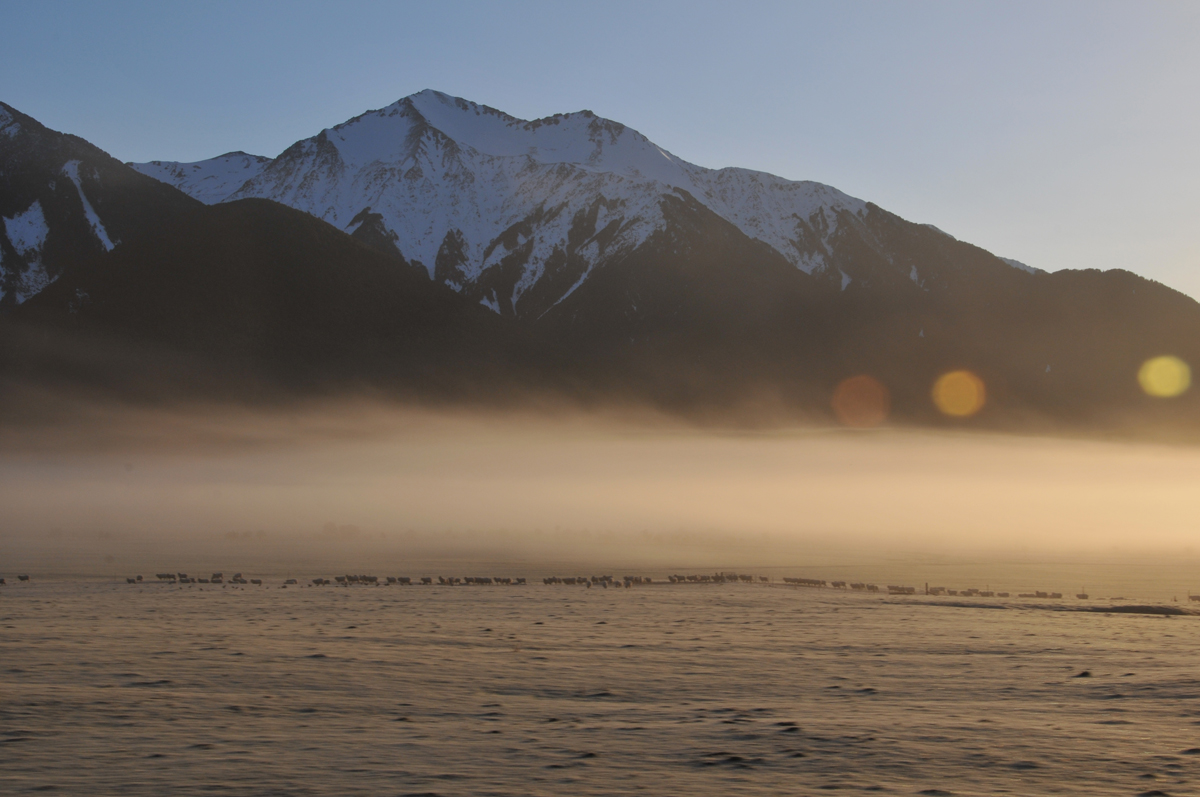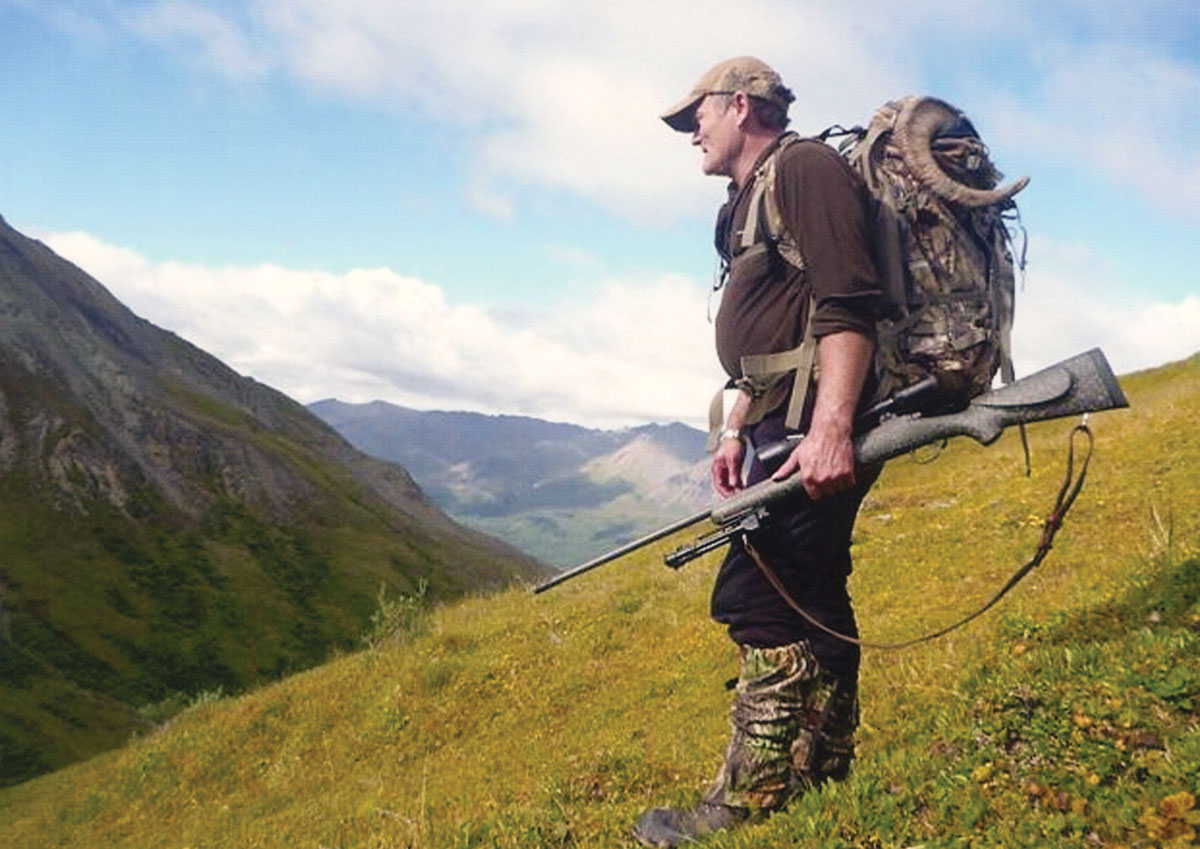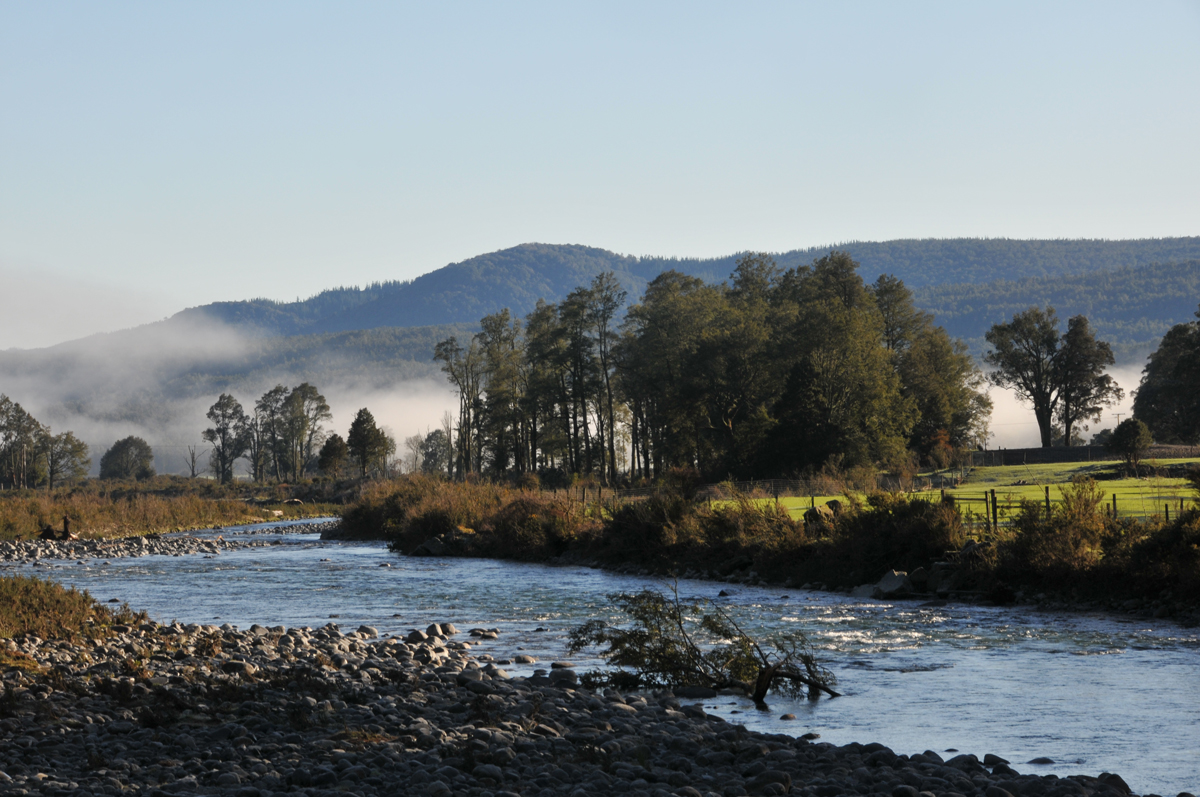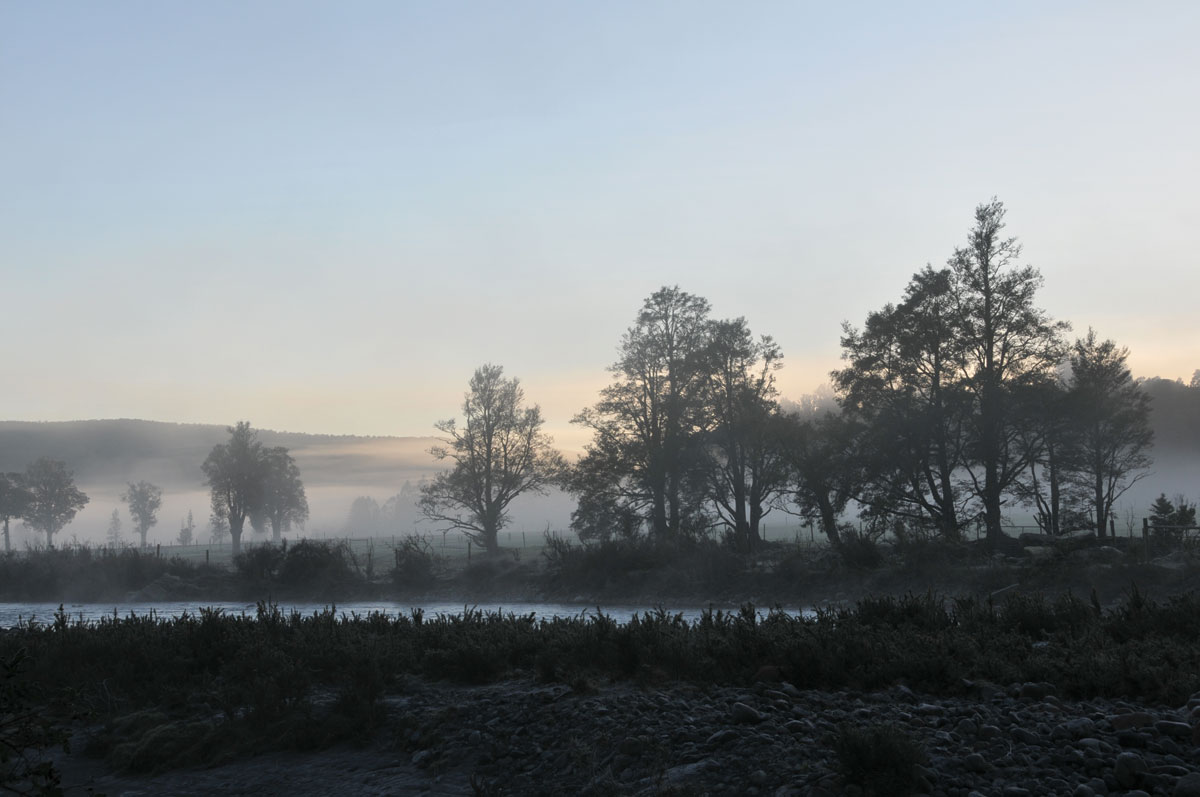New Zealand’s Professional Hunters Academy
 This has been a long time in the making Рhaving been talked about for the last 25 years and slowly progressed, but began to really pick up steam in 2007. With the imminent arrival of the NZ Game Animal Council the need for a training standard needed to be in place. After engaging the services of Bill O’Leary and input from James Cagney, Gerald Telford and myself, the result is the 14o page Professional Hunters” Training Manual. James then devised a training program to meld theory and practical together with the assistance of Don and Julie Patterson. The inaugural four day course was hosted by the Patterson’s at Manuka Point. On arrival at the lodge we stashed our rifles in the gunroom and were given a workbook and began straight into theory. Our timetable was drawn up to cover every minute of our day starting at 6:30am and frequently going beyond 9:00pm. The training was divided into units (both practical and theoretical) covering such subjects as the role and attributes of a professional hunting guide, working around helicopters, AATH hunts, equipment, environmental care codes, rifles and shooting, to name a few.
This has been a long time in the making Рhaving been talked about for the last 25 years and slowly progressed, but began to really pick up steam in 2007. With the imminent arrival of the NZ Game Animal Council the need for a training standard needed to be in place. After engaging the services of Bill O’Leary and input from James Cagney, Gerald Telford and myself, the result is the 14o page Professional Hunters” Training Manual. James then devised a training program to meld theory and practical together with the assistance of Don and Julie Patterson. The inaugural four day course was hosted by the Patterson’s at Manuka Point. On arrival at the lodge we stashed our rifles in the gunroom and were given a workbook and began straight into theory. Our timetable was drawn up to cover every minute of our day starting at 6:30am and frequently going beyond 9:00pm. The training was divided into units (both practical and theoretical) covering such subjects as the role and attributes of a professional hunting guide, working around helicopters, AATH hunts, equipment, environmental care codes, rifles and shooting, to name a few.  As a group we learnt a lot from others experiences, frequently triggering healthy debate and discussion. For example, the guide who passed a second arrow to his client on a bow hunt but inadvertently cut the bowstring in his haste; and the guide who had his female client all lined up on a Tahr only have her turn to him and give him a lecture about breast implants and how he needed to learn a thing or two about how much they hurt shooting in the prone position! Debate then raged about how well one should get to know their client. The unit on rifles and shooting offered tips from James and covered everything from cost effect sighting to barrel and scope faults. The river-crossing unit was lead by the lead instructor from the Mountain Safety Council. One of the standout points he made aside from rivers being the biggest killers in our mountains was that embarrassment was next. (i.e. not being able to make a crossing in front of a client or friend) We all took a deep breath as we all entered the cool creamy looking waters of the Rakaia River to
As a group we learnt a lot from others experiences, frequently triggering healthy debate and discussion. For example, the guide who passed a second arrow to his client on a bow hunt but inadvertently cut the bowstring in his haste; and the guide who had his female client all lined up on a Tahr only have her turn to him and give him a lecture about breast implants and how he needed to learn a thing or two about how much they hurt shooting in the prone position! Debate then raged about how well one should get to know their client. The unit on rifles and shooting offered tips from James and covered everything from cost effect sighting to barrel and scope faults. The river-crossing unit was lead by the lead instructor from the Mountain Safety Council. One of the standout points he made aside from rivers being the biggest killers in our mountains was that embarrassment was next. (i.e. not being able to make a crossing in front of a client or friend) We all took a deep breath as we all entered the cool creamy looking waters of the Rakaia River to  experience first hand the five different ways to walk a river. Then we had a unit on 4x4s, what not to do and how to get out should you make an error. Laurie Prouting provided instruction on out practical helicopter unit, for which he shut down and showed us how to deal with ELB’s, fuel shutoff points, hook release mechanisms, seatbelts etc. Then it was time for everyone to load a client into the machine along with pack, rifle and self before being flown up to a ridge to unload. We were later picked up and brought back down to hook an animal onto the hook of a hovering machine prior to climbing up and re-seating ourselves. There was theory on photography, field dressing, carcass recovery in the evening to ready us for the guided hunt practical component, scheduled for a 4:30am start. We were split into teams of four (guide, hunter and 2 non-hunters), with one team after a red deer, one after a fallow deer and the other a bow hunt for sheep. Our crew as after red stag and Don our guide set a good pace up the first 1000 feet, checking that client and non hunters were not perspiring too much. We glassed regularly an finally pinpointed a potential stag. Don told the non-hunters to stay put as he moved 100 yard to the client and instructed him to take his shot. After the client shot his animal, the non-hunters were sent back to the lodge unguided. As we neared
experience first hand the five different ways to walk a river. Then we had a unit on 4x4s, what not to do and how to get out should you make an error. Laurie Prouting provided instruction on out practical helicopter unit, for which he shut down and showed us how to deal with ELB’s, fuel shutoff points, hook release mechanisms, seatbelts etc. Then it was time for everyone to load a client into the machine along with pack, rifle and self before being flown up to a ridge to unload. We were later picked up and brought back down to hook an animal onto the hook of a hovering machine prior to climbing up and re-seating ourselves. There was theory on photography, field dressing, carcass recovery in the evening to ready us for the guided hunt practical component, scheduled for a 4:30am start. We were split into teams of four (guide, hunter and 2 non-hunters), with one team after a red deer, one after a fallow deer and the other a bow hunt for sheep. Our crew as after red stag and Don our guide set a good pace up the first 1000 feet, checking that client and non hunters were not perspiring too much. We glassed regularly an finally pinpointed a potential stag. Don told the non-hunters to stay put as he moved 100 yard to the client and instructed him to take his shot. After the client shot his animal, the non-hunters were sent back to the lodge unguided. As we neared  the lodge my thoughts went back to one classroom comment where a guide admitted to losing a client for a few hours. When all teams and animals were back to the lodge we started on the skinning for full body mounts. One of the guides was intrigued with the fact that we get all the gland material out of a deer’s tail before freezing (to stop hair slip) and that the gland is sought after on the Asian market. The other “west side” room mates at the lodge got very concerned when that same guide decided that he was going to put some deer’s tail into his cup of tea. Terry Pierson came in and took the trophy measuring unit covering SCI, CIC, Boone and Crocket and Douglas scoring systems. An interesting unit on lodge skills and hosting was delivered with some of the guides were put on cooking duties while others were serving. Instruction included how to best seat clients, how to deal with religion, wine and what conversation subjects to avoid. This first full on course finished just as quickly as it started due primarily to the fast rising river. We found ourselves leaving 93 hours after we arrived. There was so much information dispersed and everyone clearly enjoyed the course. Personally, it’s something I have been championing for a number of years – particularly for new members. –Roger Duxfield
the lodge my thoughts went back to one classroom comment where a guide admitted to losing a client for a few hours. When all teams and animals were back to the lodge we started on the skinning for full body mounts. One of the guides was intrigued with the fact that we get all the gland material out of a deer’s tail before freezing (to stop hair slip) and that the gland is sought after on the Asian market. The other “west side” room mates at the lodge got very concerned when that same guide decided that he was going to put some deer’s tail into his cup of tea. Terry Pierson came in and took the trophy measuring unit covering SCI, CIC, Boone and Crocket and Douglas scoring systems. An interesting unit on lodge skills and hosting was delivered with some of the guides were put on cooking duties while others were serving. Instruction included how to best seat clients, how to deal with religion, wine and what conversation subjects to avoid. This first full on course finished just as quickly as it started due primarily to the fast rising river. We found ourselves leaving 93 hours after we arrived. There was so much information dispersed and everyone clearly enjoyed the course. Personally, it’s something I have been championing for a number of years – particularly for new members. –Roger Duxfield

